3D Printing News Briefs: April 28, 2019
We’re getting the business out of the way first, then moving on to awards and rewards in this edition of 3D Printing News Briefs. CECIMO has expressed its approval of a new 3D printing nomenclature standard, and there’s a new design competition in town. Weerg announced the winner of its 3D Printing Project Award, and Formlabs is rewarding its loyal customers with a discount. Finally, a 3D printed Harry Potter statue flies high at a store in India.
CECIMO Welcomes New Classification Provision for 3D Printers
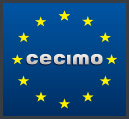 CECIMO, the European Association of the Machine Tool Industries, is glad to hear about the approval and introduction of a new product nomenclature standard, used by over 200 countries, for additive manufacturing systems. The nomenclature, known as Harmonized System and used by authorities to classify goods in international trade, is maintained by the World Customs Organisations (WCO). The classification code was first proposed by the EU on the basis of input from CECIMO, and will improve statistics collection on the international trade of AM machines by material used, in addition to promoting the inclusion of these systems in bilateral or multilateral trade deal talks around the world. The new code will go into use starting January 1, 2022.
CECIMO, the European Association of the Machine Tool Industries, is glad to hear about the approval and introduction of a new product nomenclature standard, used by over 200 countries, for additive manufacturing systems. The nomenclature, known as Harmonized System and used by authorities to classify goods in international trade, is maintained by the World Customs Organisations (WCO). The classification code was first proposed by the EU on the basis of input from CECIMO, and will improve statistics collection on the international trade of AM machines by material used, in addition to promoting the inclusion of these systems in bilateral or multilateral trade deal talks around the world. The new code will go into use starting January 1, 2022.
“Standardization is of vital importance in the industrialization of AM. Work is progressing on standards on materials, processes and applications,” said Filip Geerts, Director General at CECIMO. “In addition to standardization, we are glad to have contributed to the inclusion of AM machines in the systematic list of commodities applied by most trading nations in the world. This action will fill another vacuum in the standards’ landscape, leading to greater official intelligence on AM machine market dynamics and, therefore, helping to draft more accurate strategies for the AM sector.”
Conserv Opened New Design Competition
 Alabama tech startup Conserv, which builds sensor solutions to help places like museums, archives, and libraries preserve cultural heritage, is a big fan of 3D printing and rapid prototyping. Conserv has heard from its customers that they want to “minimize the visual disruption caused by things other than the art in a space,” which is why it’s decided to hold its own 3D design competition to find the next design iteration for its sensor platform. The prize for the winning design, which will be chosen by the startup’s own customers, is $5,000 cash.
Alabama tech startup Conserv, which builds sensor solutions to help places like museums, archives, and libraries preserve cultural heritage, is a big fan of 3D printing and rapid prototyping. Conserv has heard from its customers that they want to “minimize the visual disruption caused by things other than the art in a space,” which is why it’s decided to hold its own 3D design competition to find the next design iteration for its sensor platform. The prize for the winning design, which will be chosen by the startup’s own customers, is $5,000 cash.
“While sensors are necessary to ensure the integrity of a collection, they often look out of place, not in harmony with the carefully curated objects that people come to see,” the competition description states.
“How can we change that? How can we push the art of sensor design further so it looks more like, well, art! What does great look like in this space? How can we design a device that doesn’t look out of place in a gallery curated by the most discerning professionals while still retaining all of the features that fulfill demanding technical requirements? Can we create an object that is unassuming and functional, designed to blend in, but at the same time elicits joy when it is noticed?”
Requirements include that the solution must be designed for wall mounting, with vents for air flow, to blend into a museum environment, and for a high volume manufacturing process, like injection molding. Entrants need to provide a design sketch or rendering and a description of how the design meets the requirements, and a 3D model file for a 3D printed prototype of the device, by May 17th. For other questions and details, email nmcminn@conserv.io.
Winner Announces for Weerg 3D Printing Project Award
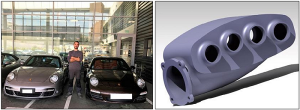 Earlier this month, Italian 3D printing and CNC machining platform Weerg opened the second edition of its 3D Printing Project Award contest, which promotes creativity, experimentation culture, and innovation in design manufacturing. This week, Weerg announced that Benjamin Nenert, a designer and specialized technician for Porsche, is the winner of its 2019 3D Printing Project Award: a €500 Weerg voucher. Nenert, who lives in France, also manages his own vintage Porsche repair and refurbishment business, Ben Auto Design on top of his day job. His award-winning project is a component for a 1983 Porsche engine that he’s currently restoring.
Earlier this month, Italian 3D printing and CNC machining platform Weerg opened the second edition of its 3D Printing Project Award contest, which promotes creativity, experimentation culture, and innovation in design manufacturing. This week, Weerg announced that Benjamin Nenert, a designer and specialized technician for Porsche, is the winner of its 2019 3D Printing Project Award: a €500 Weerg voucher. Nenert, who lives in France, also manages his own vintage Porsche repair and refurbishment business, Ben Auto Design on top of his day job. His award-winning project is a component for a 1983 Porsche engine that he’s currently restoring.
“It is a very important component because it will allow you to extract more power from the engine by converting it to a more modern electronic management system. I could also have tried to modify the original part, but it would have taken a long time, with a very bad result for the performance I was aiming for,” Nenert explained. “The 3D-printed part has all the requirements I was looking for: perfect design, heat resistance up to 100 °C and sturdiness.”
Formlabs Offering Loyalty Discount to Customers
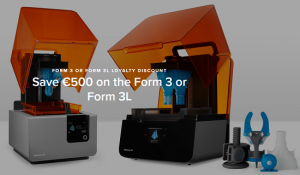 In a very smart move, Formlabs is wisely rewarding its loyal customers with a great discount if they’re interested in upgrading their Form 2 3D printer to the new Form 3 or Form 3L. The company explained that customers simply need to confirm the ownership of their own Form 2 by May 31st, 2019 in order to receive a €500 discount on the purchase of a Form 3 or Form 3L. Then they can add to their fleet of Formlabs systems; again, this is a good choice by Formlabs in order to keep its customers coming back for more.
In a very smart move, Formlabs is wisely rewarding its loyal customers with a great discount if they’re interested in upgrading their Form 2 3D printer to the new Form 3 or Form 3L. The company explained that customers simply need to confirm the ownership of their own Form 2 by May 31st, 2019 in order to receive a €500 discount on the purchase of a Form 3 or Form 3L. Then they can add to their fleet of Formlabs systems; again, this is a good choice by Formlabs in order to keep its customers coming back for more.
To confirm your Form 2 and receive your loyalty discount, share an image of the serial name on the printer’s back panel in the format “AdjectiveAnimal.” You can either get in touch with a member of the company’s sales team, or submit the information online. You’ll either get your unique loyalty discount through an email within one business day, or the sales team will apply it to your purchase. Redeem the discount in the Formlabs online store, or contact the sales team, to buy your discounted Form 3 or Form 3L 3D printer.
STPL 3D Makes 3D Printed Harry Potter Statue
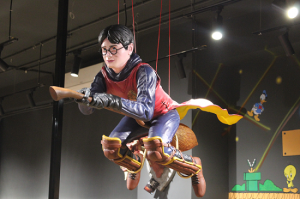 India-based rapid prototyping services company STPL 3D Printing (STPL3D) is continuing with its 3D printed statues of fictional characters. Not long after we heard about the 3D printed Spiderman statue the company made for a customer, another one of its clients requested a 5-foot 3D printed sculpture of Harry Potter for their store. STPL3D had just five days to transform the 2D images it was given into a detailed sculpture, and they got right to work. The company’s in-house designer divided the job into 25 smaller parts that would be easy to print, and once these were completed and post-processed, the team assembled the statue and delivered it to the client’s merchandise store. Using STPL3D’s technology and service, the client had a 40% reduced cost, 70% weight reduction, and saved nearly a month of time on the project.
India-based rapid prototyping services company STPL 3D Printing (STPL3D) is continuing with its 3D printed statues of fictional characters. Not long after we heard about the 3D printed Spiderman statue the company made for a customer, another one of its clients requested a 5-foot 3D printed sculpture of Harry Potter for their store. STPL3D had just five days to transform the 2D images it was given into a detailed sculpture, and they got right to work. The company’s in-house designer divided the job into 25 smaller parts that would be easy to print, and once these were completed and post-processed, the team assembled the statue and delivered it to the client’s merchandise store. Using STPL3D’s technology and service, the client had a 40% reduced cost, 70% weight reduction, and saved nearly a month of time on the project.
“3D printing helps artists transform ideas into tangible works of art. Artists from creative and entertainment domains can truly unleash their imagination to create new and exciting objects. 3D printed art models aims to expand the horizons of design and foster a culture of aesthetic innovation,” said STPL3D’s CEO Rahul Gaywala.
Discuss these stories and other 3D printing topics at 3DPrintBoard.com or share your thoughts in the comments below.
EU prioritizes additive manufacturing in U.S. trade talks, receives CECIMO support
3D Printing News Briefs: January 26, 2019
We’re starting with business first in this edition of 3D Printing News Briefs, and then moving on to design software and 3D printing materials. Mimaki USA is getting ready for the grand opening of its LA Technology Center next month, and a Sartomer executive has been elected to the RadTech board of directors. A startup will soon be offering a new cryptotoken for additive manufacturing, and the 3D Printing Association will cease operations. A simplified Blender user interface will make 3D printing easier, and Protolabs is introducing some new materials for its DMLS 3D printing.
Mimaki USA Opening Los Angeles Technology Center
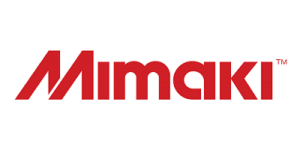 Not long after Japanese company Mimaki Engineering launched its first full-color inkjet printer in 1996, it established Mimaki USA, an operating entity that manufactures digital printing and cutting products around the world. Mimaki USA began preparing to enter the 3D printing market in 2015, and installed its first 3DUJ-553 3D printer in the Americas last winter. Now, it’s preparing for the grand opening of its Los Angeles Technology Center next month.
Not long after Japanese company Mimaki Engineering launched its first full-color inkjet printer in 1996, it established Mimaki USA, an operating entity that manufactures digital printing and cutting products around the world. Mimaki USA began preparing to enter the 3D printing market in 2015, and installed its first 3DUJ-553 3D printer in the Americas last winter. Now, it’s preparing for the grand opening of its Los Angeles Technology Center next month.
The event will take place on Friday, February 22nd from 10 am to 4 pm at the new technology center, located at 150 West Walnut Street, Suite 100, in Gardena, California. Attendees will have the chance to meet the company’s industry experts, along with Mimaki Engineering Chairman Akira Ikeda, Mimaki USA President Naoya Kawagoshi, and the regional sales managers from all seven technology centers. Live demonstrations of the company’s printers and cutters will commence after lunch, and attendees will also enjoy tours of the center and a traditional Japanese Kagami Biraki ceremony.
Sartomer’s Jeffrey Klang Elected to RadTech Board
 Sartomer, an Arkema Inc. business unit and developer of UV/EB curing technology products, has announced that Jeffrey Klang, its global R&D Directer – 3D Printing for Sartomer, has been elected to the board of directors for RadTech, a nonprofit trade association that promotes the use and development of UV and EB processing technologies. Sartomer is part of Arkema’s commercial platform dedicated to additive manufacturing, and Klang, an inventor with over 20 US patents who was previously the manager for Sartomer’s Coatings Platform R&D, has played an important role in helping the company develop and commercialize many of its oligomers and monomers.
Sartomer, an Arkema Inc. business unit and developer of UV/EB curing technology products, has announced that Jeffrey Klang, its global R&D Directer – 3D Printing for Sartomer, has been elected to the board of directors for RadTech, a nonprofit trade association that promotes the use and development of UV and EB processing technologies. Sartomer is part of Arkema’s commercial platform dedicated to additive manufacturing, and Klang, an inventor with over 20 US patents who was previously the manager for Sartomer’s Coatings Platform R&D, has played an important role in helping the company develop and commercialize many of its oligomers and monomers.
“Jeff’s strong leadership of Sartomer’s innovation and R&D initiatives supports the evolving needs of UV and EB processors in diverse industries, such as 3D printing, coatings, graphic arts, adhesives, sealants, elastomers and electronics. His deep understanding of UV/EB technologies, markets and regulatory requirements will make him an asset to RadTech’s board of directors,” said Kenny Messer, the President of Sartomer Americas.
erecoin Startup to Offer New Cryptocurrency for Additive Manufacturing
 A startup called erecoin, which is a product of CAE lab GmbH, is on a mission to change the world of 3D printing by combining the benefits of blockchain with future demands of the ever expanding AM community. After a year of preparation, erecoin has completed the registration of its ICO (Initial Coin Offering), and people can begin purchasing its new cryptotoken on the Ethereum public trading infrastructure starting February 18, 2019.
A startup called erecoin, which is a product of CAE lab GmbH, is on a mission to change the world of 3D printing by combining the benefits of blockchain with future demands of the ever expanding AM community. After a year of preparation, erecoin has completed the registration of its ICO (Initial Coin Offering), and people can begin purchasing its new cryptotoken on the Ethereum public trading infrastructure starting February 18, 2019.
“We are glad and proud that we, as a young startup, managed to master the necessary steps for a functioning utility token,” said erecoin Co-Founder Konstantin Steinmüller. “At the same time we are curious to see how the community supports our crowdfunding.”
Steinmüller told fellow co-founder Jürgen Kleinfelder about a concrete 3D prototype optimization project that CAE-lab was working on, which is how the idea to combine blockchain and 3D printing came about. The startup’s goal is to get rid of many of the uncertainties in the AM process chain, and blockchain can be used to conclude smart contracts to solve legal and technical questions in the industry. Because data exchange is integrated into the blockchain, a secure and efficient relationship of trust is created between the parties in the chain. Time will only tell if erecoin can achieve its goal and help accelerate additive manufacturing or if it is just hopeful hype or an inefficient way to do something no one needs.
3D Printing Association Closes
 The 3D Printing Association (3DPA) is the member-funded, global trade association for the 3D printing industry in Europe. In 2015, the 3DPA moved its base of operations to The Hague in order to develop an independent professional B2B platform for European AM industries. As the 3D printing landscape continues to grow and mature, the association has decided to permanently terminate its operations beginning February 1st, 2019. But this isn’t necessarily bad news – in fact, 3DPA is glad that CECIMO, the European Association of the Machine Tool Industries and related Manufacturing Technologies, has been able to set itself up as a leading 3D printing advocate in Europe.
The 3D Printing Association (3DPA) is the member-funded, global trade association for the 3D printing industry in Europe. In 2015, the 3DPA moved its base of operations to The Hague in order to develop an independent professional B2B platform for European AM industries. As the 3D printing landscape continues to grow and mature, the association has decided to permanently terminate its operations beginning February 1st, 2019. But this isn’t necessarily bad news – in fact, 3DPA is glad that CECIMO, the European Association of the Machine Tool Industries and related Manufacturing Technologies, has been able to set itself up as a leading 3D printing advocate in Europe.
“3DPA’s goal, derived from an online survey and a business summit at the beginning of 2015, was to provide an independent B2B platform for standardisation, education and industry advocacy. Although there are still important steps to be taken to reaching full maturity, meanwhile the landscape has become less fragmented and volatile, and additive manufacturing has been embraced as strategic pillar by well-established umbrella organisations in sectors like manufacturing, automotive, aerospace and medical appliances,” said 3DPA’s Managing Director Jules Lejeune.
“CECIMO for example, is the long standing European Association of the Machine Tool Industries and related Manufacturing Technologies. It represents some 350 leading AM companies that play a significant role in a wide variety of critical sections of the AM value chain – from the supply of all different types of raw materials for additive manufacturing and the development of software, to machine manufacturing and post-processing. In recent years, it has successfully claimed a leading role in bringing relevant topics to the regulatory agenda in Brussels.”
Simplified Blender User Interface
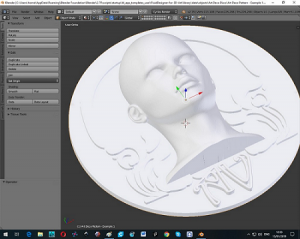 While the free 3D design and modeling software application Blender is very handy, it’s only helpful if you’re able to learn how to use it, and by some accounts, that is not an easy feat. But, now there’s a new version of Blender that includes a simplified user interface (UI) that’s so easy, even kids as young as 10 years old can figure out how to work it. FluidDesigner has used a new Blender 2.79 feature called Application Templates, which makes it possible to add a library of parametric smart objects and reduce the menu structure and interface.
While the free 3D design and modeling software application Blender is very handy, it’s only helpful if you’re able to learn how to use it, and by some accounts, that is not an easy feat. But, now there’s a new version of Blender that includes a simplified user interface (UI) that’s so easy, even kids as young as 10 years old can figure out how to work it. FluidDesigner has used a new Blender 2.79 feature called Application Templates, which makes it possible to add a library of parametric smart objects and reduce the menu structure and interface.
“Application Templates allows for the simplification of the UI but with the whole power of Blender in the background. You can access nearly all of Blender commands from the Spacebar or by switching panels. Another way to look at it is that it is an Application Template is an almighty Add-On,” Paul Summers from FluidDesigner said in an email.
“All objects are either Nurbs or Bezier (2D) Curves for ease of editing. Nurbs objects in particular can be joined together to create personalised jewellery or artwork quickly and simply.
“There is no need to go to the trouble of joining objects using Boolean modifiers, instead you simply overlap Nurbs objects and then run the *.obj file through Netfabb Basic to repair any issues created with Blender objects. With its much simplified interface, created by Andrew Peel, FluidDesigner for 3D Printing with its parametric smart objects (Nurbs curves) is suitable for even the novice user. The current version runs under Blender 2.79 and can be accessed from the File menu.”
Protolabs Adds New DMLS Materials
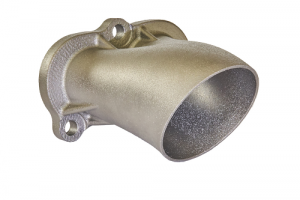 Protolabs, a digital manufacturing source for custom prototypes and low-volume production parts, has announced that it is enhancing its direct metal laser sintering (DMLS) offering with two new materials. Nickel-based Inconel 718 is a heat- and corrosion-resistant alloy with high creep, fatigue, rupture, and tensile strength, is able to create a thick, stable, passivating oxide layer at high temperatures, which protects it from attack – making it an ideal material for aerospace and other heavy industries for manufacturing gas turbine parts, jet engines, and rocket engine components.
Protolabs, a digital manufacturing source for custom prototypes and low-volume production parts, has announced that it is enhancing its direct metal laser sintering (DMLS) offering with two new materials. Nickel-based Inconel 718 is a heat- and corrosion-resistant alloy with high creep, fatigue, rupture, and tensile strength, is able to create a thick, stable, passivating oxide layer at high temperatures, which protects it from attack – making it an ideal material for aerospace and other heavy industries for manufacturing gas turbine parts, jet engines, and rocket engine components.
Maraging Steel 1.2709 is a pre-alloyed, ultra-high strength steel in the form of fine powder. It’s easy to heat treat with a simple thermal age-hardening process, and offers high hardness and high-temperature resistance, which makes it perfect for high performance industrial and engineering parts and tooling applications. These two new Protolabs materials additions help reinforce the company’s enduring reputation as one that can offer an impressive range of metals.
Discuss these stories and other 3D printing topics at 3DPrintBoard.com or share your thoughts in the Facebook comments below.
CECIMO Additive Manufacturing committee created to advance industrialisation of AM
3D Printing News Briefs: November 7, 2018
We’re starting with more formnext announcements on today’s 3D Printing News Briefs, then moving on to classes and workshops. Verashape is launching a new 3D printer at next week’s event in Frankfurt, while Cubicure will be presenting its new CSS software solution for 3D printing. In the meantime, SelfCAD is releasing an updated version of its software. Finally, the EU-funded METALS project has published an online 3D printing course, and the people behind a new program for 3D printed construction technology in India are organizing a workshop on construction 3D printing.
VSHAPER 500 Med Launching at formnext
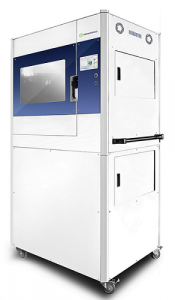 Just like Polish 3D printer manufacturer Verashape introduced its 5-Axis VSHAPER 3D printer at last year’s formnext, the company is taking advantage of the 2018 event in Frankfurt, estimated to gather a record number of participants in its largest space yet, to launch its newest 3D printer – the VSHAPER 500 MED, which was developed to meet the growing demands for spatial printouts used in the medical field. The VSHAPER 500 MED, which includes a vacuum table, a closed chamber with UV light, and silver-based antibacterial coatings, is perfect for creating precise, high quality 3D printed medical models. The 3D printer also has a 420 x 420 x 400 mm workspace, along with an extruder with two V-JET heads.
Just like Polish 3D printer manufacturer Verashape introduced its 5-Axis VSHAPER 3D printer at last year’s formnext, the company is taking advantage of the 2018 event in Frankfurt, estimated to gather a record number of participants in its largest space yet, to launch its newest 3D printer – the VSHAPER 500 MED, which was developed to meet the growing demands for spatial printouts used in the medical field. The VSHAPER 500 MED, which includes a vacuum table, a closed chamber with UV light, and silver-based antibacterial coatings, is perfect for creating precise, high quality 3D printed medical models. The 3D printer also has a 420 x 420 x 400 mm workspace, along with an extruder with two V-JET heads.
“3D Printing technology is becoming an increasingly valuable tool in medical diseases treatment, fighting disabilities and increasing the effectiveness of complicated surgeries,” said Marcin Szymański, the company’s VSHAPER Product Manager. “The technology is already used to aid the creation of dental crowns, bone parts, blood vessels and hip-joints prosthetics.”
To see the new VSHAPER 500 MED 3D printer for yourself, visit Verashape at formnext from November 13-16 at Stand 3.1-G88.
Cubicure Presenting CSS Software Solution at formnext
 Cubicure, a spin-off company of TU Wien, will be presenting its new, platform-independent software solution for additive manufacturing data preparation at formnext. The software, called CSS for Cubicure Support & Slice, can generate complex support geometries, as well as edit STL files. The comprehensive tool allows users to generate, edit and repair 3D models, in addition to easily exporting layer information for the 3D printing process. Developed with graphic software provider DeskArtes and based on 3Data Expert, CSS is applicable for DLP and SLA (stereolithography), and Cubicure’s own Hot Lithography technology, and also comes with an intuitive import function of several surface models, a user-friendly GUI, and data conversion tools.
Cubicure, a spin-off company of TU Wien, will be presenting its new, platform-independent software solution for additive manufacturing data preparation at formnext. The software, called CSS for Cubicure Support & Slice, can generate complex support geometries, as well as edit STL files. The comprehensive tool allows users to generate, edit and repair 3D models, in addition to easily exporting layer information for the 3D printing process. Developed with graphic software provider DeskArtes and based on 3Data Expert, CSS is applicable for DLP and SLA (stereolithography), and Cubicure’s own Hot Lithography technology, and also comes with an intuitive import function of several surface models, a user-friendly GUI, and data conversion tools.
Dr. Robert Gmeiner, the CEO of Cubicure GmbH, said, “With this software solution Cubicure offers another important product for the additive manufacturing value chain.”
You can visit Cubicure Booth G59 in Hall 3.1 at formnext.
SelfCAD Releasing Updated Software
 Browser-based 3D design platform SelfCAD, founded in 2015, combines 3D modeling, slicing, and several other tools and functions in one easy program. Now, SelfCAD has launched an updated version of its software, which was developed based on users’ expectations of powerful but easy to use 3D modeling software. Version 2.0 of the modeling software includes more capabilities, like a 3D sketching toolset to increase the user’s level of freedom, and simplified design, including an intuitive user interface with a less confusing toolbar that makes it easy to use, even for beginners.
Browser-based 3D design platform SelfCAD, founded in 2015, combines 3D modeling, slicing, and several other tools and functions in one easy program. Now, SelfCAD has launched an updated version of its software, which was developed based on users’ expectations of powerful but easy to use 3D modeling software. Version 2.0 of the modeling software includes more capabilities, like a 3D sketching toolset to increase the user’s level of freedom, and simplified design, including an intuitive user interface with a less confusing toolbar that makes it easy to use, even for beginners.
Additional features include new selection modes, a simple objects view with both light and dark modes, a measurement option for easier design of accurate models, new sketching brushes, and new shapes. What’s not new is that SelfCAD, with a price of $14.99 a month or $139.99 a year after a 10-day free trial.
METALS Project Publishes Online 3D Printing Course
 The three-year MachinE Tool Alliance for Skills (METALS) project, funded by the European Union under the Erasmus+ program and coordinated by CECIMO, ended last week, but not before releasing a free, online course about the fundamentals of AM. The project was characterized by a comprehensive partnership across Germany, Italy, and Spain, with a goal of increasing the competitiveness of Europe’s machine tool industry by providing the necessary skills to benefit from new disruptive technologies, such as 3D printing. The e-learning course, which is available in English, German, Italian and Spanish, intends to support the development of the AM workforce, and includes 27 learning units divided along three main areas: knowledge of AM, work-process, and entrepreneurship.
The three-year MachinE Tool Alliance for Skills (METALS) project, funded by the European Union under the Erasmus+ program and coordinated by CECIMO, ended last week, but not before releasing a free, online course about the fundamentals of AM. The project was characterized by a comprehensive partnership across Germany, Italy, and Spain, with a goal of increasing the competitiveness of Europe’s machine tool industry by providing the necessary skills to benefit from new disruptive technologies, such as 3D printing. The e-learning course, which is available in English, German, Italian and Spanish, intends to support the development of the AM workforce, and includes 27 learning units divided along three main areas: knowledge of AM, work-process, and entrepreneurship.
“Training and education are important elements for the industrialisation of additive technologies in Europe, which is the objective of CECIMO,” said Filip Geerts, CECIMO’s Director General. “With METALS, learners will be able to access relevant online knowledge at no cost and start building their competences to interact with AM. Coupled with on-hands training, which remains essential, initiatives like METALS are useful to increase the overall awareness of what AM concretely is and entails.”
National Workshop in India on 3D Printing Construction
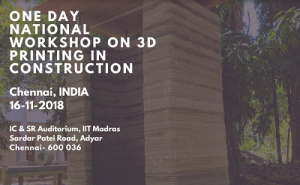 Indian 3D printing startup Tvasta Manufacturing Solutions, based out of Bangalore and Chennai, is a design and manufacturing organization that specializes in industrial 3D printing. The startup, founded by a group of alumni from the Indian Institute of Technology Madras, developed India’s first 3D printed concrete structure in collaboration with the IIT Madras Civil Department. Now, Tvasta and IIT Madras are organizing a national workshop, to be held in Chennai on November 16, all about 3D printing in construction.
Indian 3D printing startup Tvasta Manufacturing Solutions, based out of Bangalore and Chennai, is a design and manufacturing organization that specializes in industrial 3D printing. The startup, founded by a group of alumni from the Indian Institute of Technology Madras, developed India’s first 3D printed concrete structure in collaboration with the IIT Madras Civil Department. Now, Tvasta and IIT Madras are organizing a national workshop, to be held in Chennai on November 16, all about 3D printing in construction.
The objective of the conference is to present how construction 3D printing has the potential to majorly boost the country’s affordable housing sector. Many reputable speakers from around the world, including academic and industry experts, have been invited to speak about developments in automation, specialized concrete mixes, structural design, and other topics during the workshop. The conference will be held in the IC & SR Auditorium at IIT Madras.
Discuss these stories and other 3D printing topics at 3DPrintBoard.com or share your thoughts in the Facebook comments below.
CECIMO Raises Concerns: How Much is Too Much 3D Printing Regulation
 Regulation is important in any industry, as are standards which ensure that every player in the industry is delivering products and processes up to a certain quality and consistency. There’s a fine line, however, between healthy regulation and unnecessarily strict standards that stifle innovation. At the beginning of July, the European Parliament adopted a non-binding resolution entitled “Three-dimensional printing: intellectual property rights and civil liability,” with 631 votes in favor, 27 against and 19 abstentions.
Regulation is important in any industry, as are standards which ensure that every player in the industry is delivering products and processes up to a certain quality and consistency. There’s a fine line, however, between healthy regulation and unnecessarily strict standards that stifle innovation. At the beginning of July, the European Parliament adopted a non-binding resolution entitled “Three-dimensional printing: intellectual property rights and civil liability,” with 631 votes in favor, 27 against and 19 abstentions.
The resolution is largely a positive one in favor of 3D printing, pointing out the benefits of the technology for society and the economy and the need for new rules supporting faster certification of parts. That’s undoubtedly a good thing; one of the factors that holds up additive manufacturing from becoming a more prevalent production technology is the issue of getting bogged down in the part certification process. However, the resolution also calls for the European Commission to consider a revision of the Liability and Intellectual Property Rights (IPR) regulatory framework for 3D printing in the European Union.
The European Association of the Machine Tool Industries (CECIMO) has some concerns about this, believing that current EU regulations are enough and that further tightening intellectual property regulations would prevent the kind of innovation that is necessary for the 3D printing industry to continue to grow.
“3D printing technologies will thrive in Europe if, among other things, legislation continues to create supportive conditions,” CECIMO Director General Filip Geerts told 3DPrint.com. “Industry has been instrumental in pushing through solutions in the areas of digital rights management and data security. In this context, there is no need to establish new EU provisions on liability and Intellectual Property just for 3D printing at this stage, especially as there is no evidence of 3D printing being used as an easier or favoured production method for counterfeit goods.”
Panic about intellectual property violations are prevalent in the 3D printing industry, but many have argued that those fears are overblown. Individual designers who post their files online are at risk of having their designs stolen and sold elsewhere, but in cases where that has happened, crackdown on the offenders has generally been swift. Many are concerned about the theft of intellectual property from corporations, but there hasn’t been much evidence of that happening so far, and many preventative measures have been offered by experts on how to safeguard parts against being copied. CECIMO argues that regulations are already strict when it comes to 3D printing, and that a difference should be established between business-to-business (B2B) and business-to-consumer (B2C) uses of the technology when approaching regulation.
Liability is an issue discussed by the European Parliament as well, which was outlined initially in a preliminary report at the end of 2017. The question is who is responsible when someone is harmed by a 3D printed object – the manufacturer of the object itself, the manufacturer of the 3D printer, or the creator of the software used to design the object? The issue is a murky one, and again CECIMO argues that too much focus on liability is likely to slow down the necessary acceleration of 3D printing in Europe.
The adoption of the resolution requires a mandatory response from the European Commission within three months. The Commission has been asked to outline its views and intentions on the subject, and CECIMO intends to continue to work closely with the Commission to encourage that the current EU regulations be left alone.
Discuss this and other 3D printing topics at 3DPrintBoard.com or share your thoughts below.
[Images provided by CECIMO]

